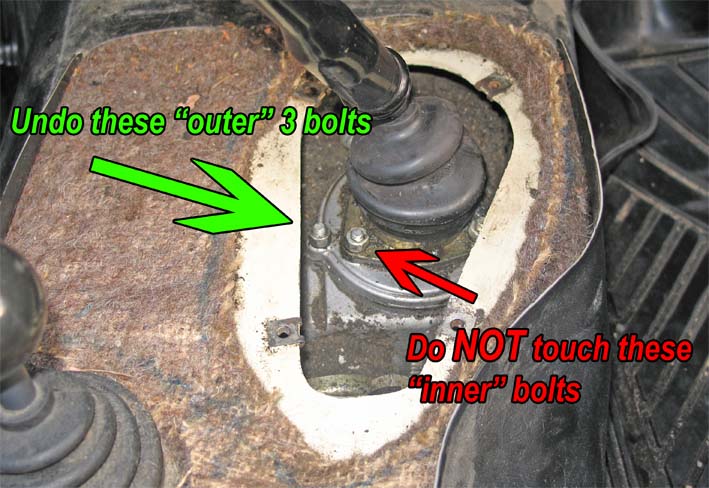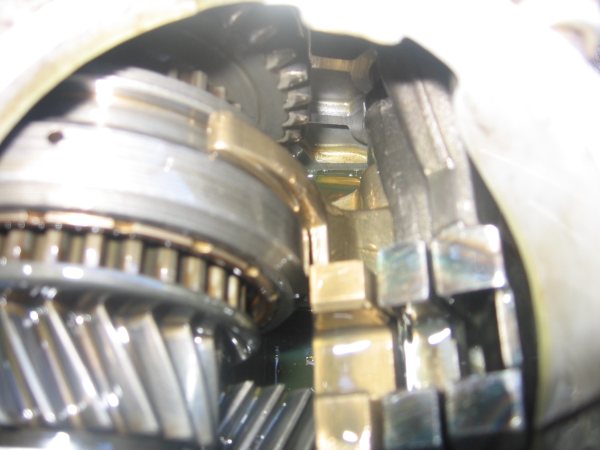
| Home
| Newbies Guide | Technical Resources
| Lada Niva Clubs | Niva
Lift Kits | Gallery | Links
|

The 5-speed gearbox is the Niva's weak point, and it is essential the oil is
changed regularly (especially if used off-road) — and
overfilled.
The gearbox was originally designed for a lighter and less powerful 2 wheel-drive car, and was designed by Italians who weren't known for making the best gearboxes in the world at the time. The bearings are possibly a bit smaller than ideal for the job and can be of questionable quality (especially if replaced with cheap low quality bearings). Also the fifth gear was added as an after-thought and hence isn't as well designed as it could have been. To compound these issues many owners are unaware that 5th should not be used at under 80KPH, and some tight-fisted owners have skimped on service costs and not changed the oil regularly.
A popular method of helping preserve the gearbox is to overfill the gearbox with 500ml more than specified so that 5th gear gets improved lubrication. Luckily, it's pretty easy to do. I do not recommend old style or cheap unknown GL5 oil for the Lada gearbox, although AvtoVaz/Lada specify GL5 a good quality GL4 is fine and considered better by many Niva owners (check any GL5 specifications that it is yellow-metal safe; see more about the potential problem with high sulphur content gearbox oils on the Oils page)
Drain the old oil by removing the sump-plug in the bottom of the gearbox, the 12mm hex in your Lada tool kit is what you'll need (and it usually pays to check you can open your filling point before draining, or you might be stuck with no oil in the gearbox). Replace the drain-plug (tip: use a drain-plug from a Niva engine if you have a spare, the sump-plug has a magnetic tip which collects and holds any "spare" metal in the oil).
Now you can either fill the gearbox from the usual filling point on the left side of the gearbox, or from where the gear-shifter stick bolts on the top of the gearbox. The problem with using the usual method to overfill is that the oil will likely start dribbling back out before you've got the extra amount of oil in. To overcome this you can jack the left side up, or drive the left side up on to some tyres with the right side down in the gutter.
Alternately, it's pretty easy to fill the gearbox from above if you don't want to crawl about underneath:
You'll have to remove the black plastic that surrounds the gear & transfer-case shifters, but that's a simple matter of a few screws, and a couple of rubber boots.
You'll then see the below image. Unbolting the 3 "outer" bolts on the base of the shifter mechanism (put it neutral first), lift the shifter mechanism out, pour in 1.8 to 2 litres of oil (don't use more than 2 litres or you'll blow seals; and bear in mind that some oil stays in the rear section of the 'box when you drain it, so 1.8 litres is a better bet than 2), and bolt things back together in reverse order. Easy. The only potential catch is unbolting the wrong bolts (see image below) which may have fatal consequences for your gearbox if a bolt drops into the internals.

Undo the outer bolts; do NOT undo the inner bolts

Here's what 2 litres
of oil looks like in the gearbox (visable between the gear cluster and the bronze
selector rod)
Tip - before you put the interior panels back, pop some extra padding of some sort underneath as the Niva lets a lot of noise in through the gearbox and transfer-case shifter holes.
Note - the manual says do not operate 5th gear at less than 80 kph, and the Australian Lada parts dealer recommends a 90 kph minimum (and has indeed sold less replacement fifth gears since issuing this advice). It is also well worth checking the gearbox's main rear bolt is tight and locked in place.
This page lives at the www.ladaniva.co.uk/baxter domain, if you’re reading it from anywhere else you may not be reading the most up-to-date copy.
Diagnosing & Rebuilding the Gearbox
| Home | Newbies Guide | Cloggy's DOHC | Lada Niva Clubs | Niva Lift Kits | Gallery | Links |
Please read the General Disclaimer near the bottom of this page